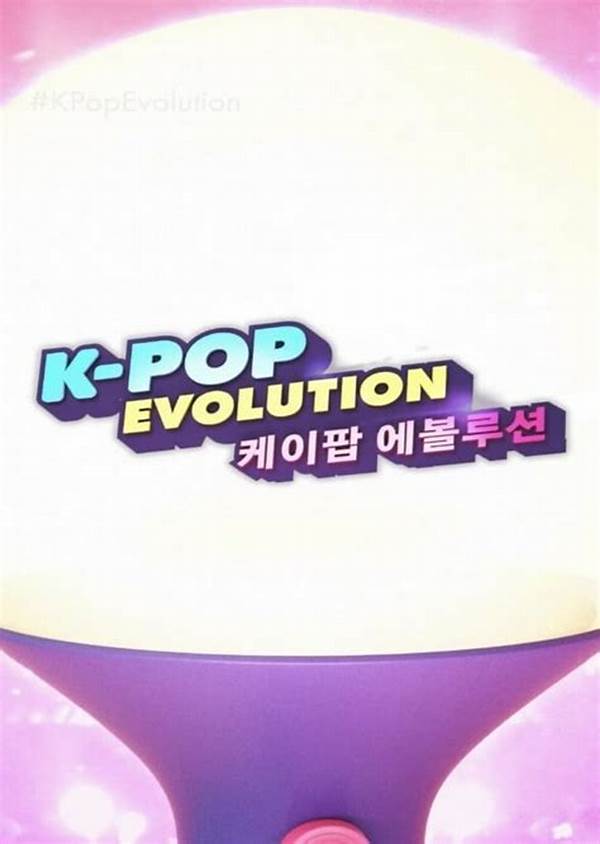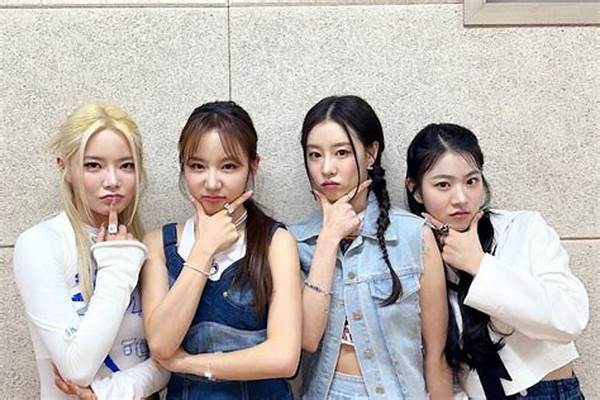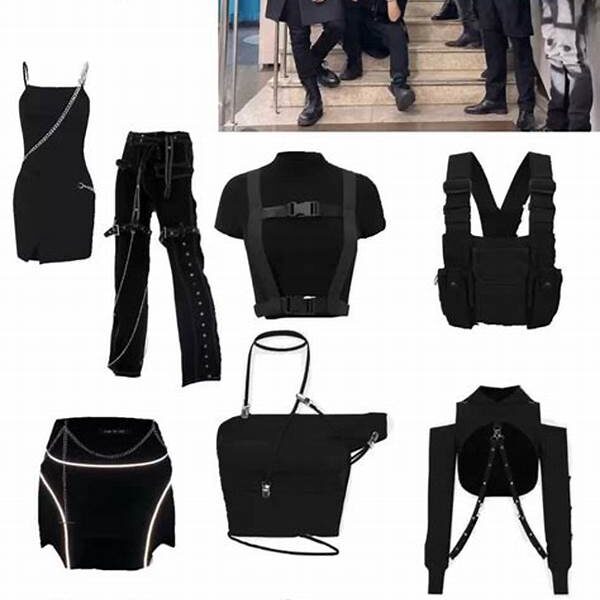Hey there, fellow K-pop enthusiasts! If you’ve ever been entranced by the dazzling world of K-pop, you know it’s not just the catchy tunes and slick choreography that pull you in. The fashion and style are equally captivating, often setting standards and trends. Let’s dive into the K-pop style evolution through decades and see how this mesmerizing world has transformed over time.
Read Now : Asian-inspired Urban Outfits
The Transformation Through Time
K-pop has never been about being static. Each decade brings fresh trends and transformations, leaving fans in awe. The 1990s ushered in early K-pop styles influenced by Western pop, where baggy pants, colorful windbreakers, and oversized shirts were all the rage. Fast forward to the 2000s, and you see a shift towards sleeker, more fitted clothes, with influences of hip-hop and street style. The vibrant colors began to tone down, and the aesthetic looked more polished. As K-pop entered the 2010s, the style became synonymous with high fashion, with idols donning designer clothes, setting new trends every comeback. K-pop style evolution through decades isn’t just about clothes; it’s about blending culture, music, and personality into a cohesive style statement that resonates worldwide. This transformation shows how adaptable and influential the Korean pop industry truly is. The beauty of this evolution is in its unpredictability, keeping us all excited for what’s next.
Key Milestones in K-Pop Style Evolution
1. The Baggy Era: The late 90s saw K-pop bands rocking oversized clothes, setting the trend for a casual and laid-back vibe that was a staple back then. This was the beginning of K-pop style evolution through decades.
2. Rise of High Fashion: Enter the 2010s and K-pop idols began embracing high fashion, turning heads on international runways and influencing global fashion shows.
3. The Color Explosion: Somewhere along the evolution, K-pop stars started incorporating a riot of colors, showcasing vibrant, daring, and bold styles that became a signature look.
4. Gender Fluidity: The later years witnessed K-pop breaking gender norms, showcasing styles that are fluid and not confined to traditional gender-specific clothing.
5. Technology in Fashion: As technology progresses, we’re seeing electronic clothing and LED accessories on stage, making performances visually captivating, marking a new phase in k-pop style evolution through decades.
The Influence of K-Pop Style Globally
The global reach of K-pop style evolution through decades is more profound than ever. Fans across continents look up to idols not just for music but as fashion icons. This evolution has inspired millions to experiment with their styles, blending Western and Eastern fashion influences. The fascinating part is how easily these trends transcend borders, echoing across America, Europe, and other parts of Asia. K-pop’s global influence showcases its power in shaping trends because it’s more than entertainment; it’s a cultural phenomenon. K-pop idols often become ambassadors for international luxury brands, further cementing their position as global trendsetters. The ripple effect of their unique styles can be seen in how rapidly fashion trends change worldwide. The k-pop style evolution through decades has made the genre a dynamic interface where culture, art, and style meet, engaging and inspiring a global audience.
Color and Fashion Blending
As we track the k-pop style evolution through decades, one striking aspect is its celebration of color and mixing various cultural fashion elements. From bold, experimental colors to minimalistic styles with a twist, K-pop is adept at blending fashion streams effortlessly. Here are ten explanations of this development:
1. Mixing Elements: K-pop fashion unites diverse cultural fashion styles, making for a dynamic aesthetic.
2. Bold Colors: The palette is vibrant and daring, often pushing boundaries.
3. Layered Fashion: Layers and textures play a significant role, adding depth to the look.
4. DIY Inspirations: Idols often use DIY accessories, giving personal touches to their style.
Read Now : Minimalistic Fashion Ideas From Jimin
5. Inclusive Styles: The evolution leans toward inclusivity, embracing non-binary fashion.
6. Era Blending: It’s not uncommon to find styles blending various decades, a nod to the past and future.
7. Street Style Edge: There’s a consistent street style influence, keeping looks relatable.
8. Theatrical Influence: Sometimes, dramatic elements are incorporated, much like stage costumes.
9. Cultural Celebrations: Styles also reflect cultural pride, celebrating Korean heritage.
10. Innovation in Fabric: New, innovative fabrics are often highlighted, showcasing tech in fashion.
K-Pop’s Heartbeat: The Iconic Festivals
One cannot discuss the k-pop style evolution through decades without acknowledging the role of iconic music festivals and award shows. These platforms are where fashion statements often turn legendary. More than just about music, these moments are about making lasting impressions and setting trends that reverberate through the fanbase. K-pop festivals have become synonymous with bold style experiments, where what’s seen on stage often translates into the next big global fashion trend. Whether it’s elaborate costumes, subtle nods to traditional Korean attire, or collaborations with high-fashion houses, these events symbolize the heartbeat of K-pop fashion. The k-pop style evolution through decades is vividly on display during these events. They serve as both reflection and anticipation of what K-pop style can and will evolve into. The pageantry of these festivals, coupled with cutting-edge style, attracts not just music fans but also fashion enthusiasts eager to see the latest trends.
Behind the Scenes: Styling K-Pop Idols
Looking beyond the glamour reveals the behind-the-scenes artistry that shapes the k-pop style evolution through decades. Stylists, designers, and creative directors are the unsung heroes. They craft these visual masterpieces that fans adore. It’s fascinating how much thought goes into each idol’s look; from concept stages to seeing them shine on stage or in music videos, the process is meticulous. Every outfit, accessory, and hairstyle reflects a broader artistic vision, often tied into the thematic narrative of the album or song being promoted. This blend of art and commerce underscores why style is such a crucial element of K-pop. Each era gives us a glimpse into the creative minds pushing boundaries, exploring new frontiers of fashion tied seamlessly with storytelling. Without these talented professionals, the k-pop style evolution through decades wouldn’t have the depth and diversity that continues to enchant global audiences. Their work ensures K-pop remains at the forefront of both music and style, continually setting new standards for the world to follow.
Conclusion: The Journey Continues
Wrapping up our journey through the k-pop style evolution through decades, it’s clear that K-pop’s influence stretches far and wide. From vibrant costumes to pushing the boundaries of traditional fashion norms, its impact is undeniable. The beauty of this evolution is not just in showcasing stunning aesthetics but in how it continually adapts, reflecting cultural shifts and global trends. As K-pop continues to evolve, it will undoubtedly keep inspiring and challenging fashion norms around the globe. The organic and dynamic nature of this style evolution ensure that K-pop will remain an influential force in both music and fashion industries. With every comeback, performance, and new release, K-pop will continue to redefine its style, leaving fans and fashionistas eagerly awaiting the next chapter.


